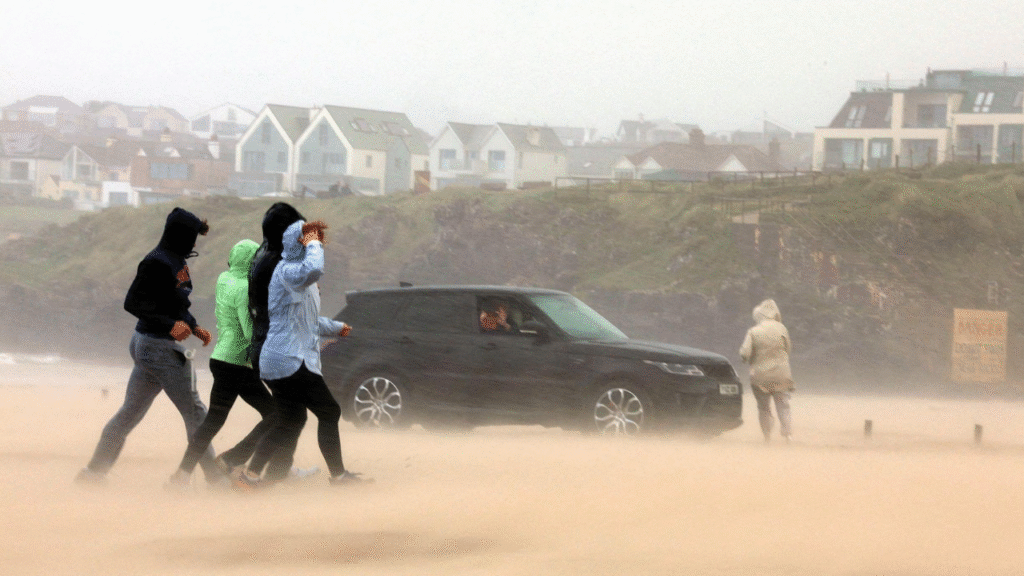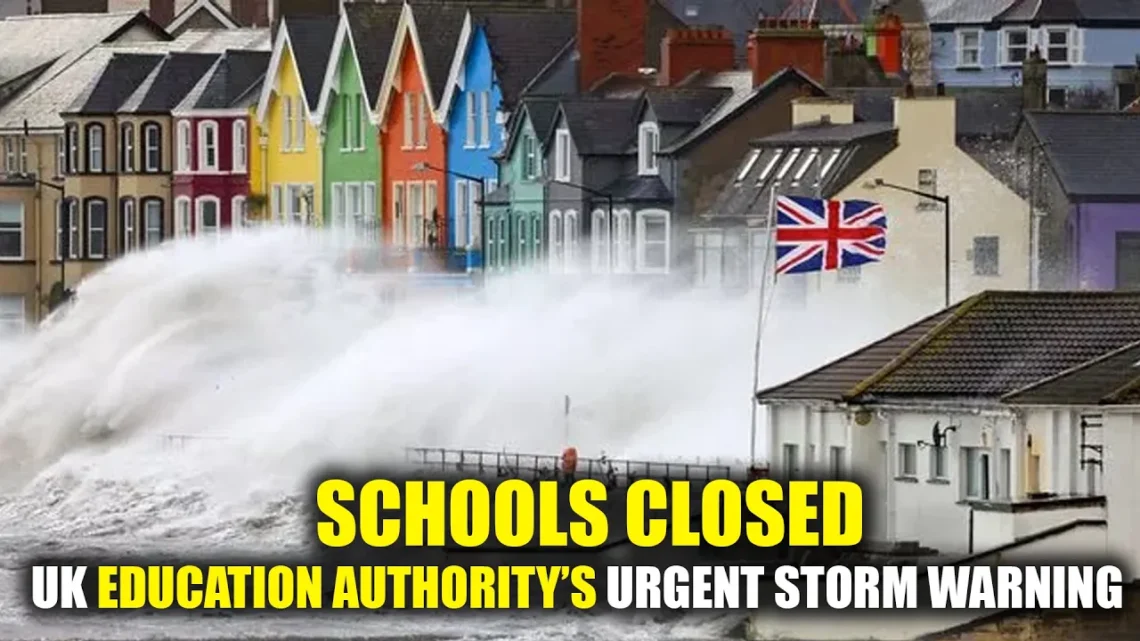Storm Amy has swept across Northern Ireland, forcing schools to close early as the Education Authority issued an amber weather warning. The storm brought high winds, heavy rain, and travel chaos, raising serious concerns for student safety and community preparedness. Parents, teachers, and local authorities are working together to manage the disruption while keeping children safe.

Understanding the Amber Weather Warning
When the Education Authority issues an amber warning, it signals a higher risk of danger than a standard yellow alert. Storm Amy triggered this warning due to its combination of gale-force winds and torrential rainfall. Such conditions can quickly lead to falling trees, power cuts, and dangerous travel routes.
For Northern Ireland schools, the amber alert meant swift decisions were necessary. Principals and local councils coordinated with the Education Authority to implement closures before conditions worsened.
Why Schools Closed Early During Storm Amy
Schools are not only places of learning but also central hubs for community safety. The early closures across Northern Ireland were designed to:
- Protect children from traveling in severe weather.
- Allow parents to collect students before conditions deteriorated.
- Reduce road congestion before high winds and flooding peaks.
Real-Life Example: A Belfast Primary School Response
At one Belfast primary school, staff reported that winds began shaking classroom windows by early afternoon. The headteacher decided to dismiss students before 1 p.m., ensuring buses could run safely before roads became hazardous. Parents appreciated the early notice, highlighting how communication systems via text alerts and emails played a vital role.
Impact on Parents and Families
The sudden change disrupted routines for thousands of families. Many working parents had to adjust their schedules or arrange emergency childcare. Employers across Northern Ireland faced calls for flexibility as workers rushed to collect children.
Yet, most parents agreed that safety outweighed inconvenience. Social media posts revealed gratitude toward the Education Authority for prioritizing well-being. The decision reminded communities of the importance of strong emergency planning.
Travel and Transport Challenges
One of the most pressing concerns during Storm Amy was transportation. School buses, local trains, and car journeys faced delays or cancellations.
- Several rural routes became blocked by fallen branches.
- Flooding in low-lying areas slowed down traffic.
- High winds made bridges unsafe for larger vehicles.
Strategies for Safer School Travel During Storms
- Plan Ahead: Parents should monitor weather apps and Education Authority updates.
- Staggered Pickups: Schools can schedule phased pickups to reduce congestion.
- Alternative Routes: Families should know backup travel routes in case of closures.
- Emergency Contacts: Ensure schools have up-to-date emergency numbers.
How the Education Authority Responded
The Education Authority issued detailed guidance on handling the storm’s impact. Their statement emphasized:
- Collaboration with school principals.
- Safety-first policies for students and staff.
- Real-time updates via official websites and social media.
This response showcased the importance of central coordination. By acting quickly, the Authority prevented chaos and reassured the public.
Wider Community Effects of Storm Amy
Storm Amy didn’t just affect schools. Communities across Northern Ireland experienced power outages, blocked roads, and local business disruptions. Emergency services were stretched thin, dealing with accidents caused by fallen debris and flash flooding.
Many community centers opened their doors to provide shelter and warmth. Volunteers stepped forward to help elderly residents and vulnerable families. The storm, while disruptive, also highlighted the resilience and solidarity of Northern Irish communities.
Tips for Parents During Severe Weather Closures
Parents often face stress when schools close suddenly. Here are some practical tips:
- Stay Informed: Sign up for school and Education Authority alerts.
- Prepare Ahead: Keep a storm kit with torches, snacks, and water at home.
- Work Flexibility: Speak to employers about flexible hours during weather crises.
- Engage Kids: Turn closures into learning opportunities with home-based activities.
The Role of Schools in Emergency Preparedness
Storm Amy underscored the need for schools to be prepared for natural disruptions. Best practices include:
- Clear communication plans.
- Emergency drills for staff and students.
- Collaboration with local councils and emergency services.
- Investment in digital learning tools for remote days.
Case Study: Remote Learning in Derry
One secondary school in Derry used online platforms during the storm. While students left early, teachers uploaded assignments digitally. This ensured continuity of learning while keeping everyone safe at home.
Looking Ahead: Lessons from Storm Amy
Northern Ireland’s quick response to Storm Amy will inform future storm strategies. Authorities are likely to review:
- Early warning systems.
- Transport safety policies.
- Long-term investments in infrastructure resilience.
Parents, teachers, and students learned valuable lessons about flexibility and safety-first thinking.
FAQs About Storm Amy School Closures
Why did Storm Amy cause NI schools to close early?
Storm Amy’s strong winds and rain prompted an amber weather warning. The Education Authority and schools acted to protect students from unsafe travel conditions.
What does an amber weather warning mean for schools?
It signals heightened risk to public safety, often leading to closures or early dismissals to ensure children and staff avoid dangerous travel.
How were parents informed about Storm Amy closures?
Schools used text alerts, emails, and social media. The Education Authority also provided updates on its official platforms.
Did all schools in Northern Ireland close early?
Not all, but many in high-risk areas dismissed students before weather conditions peaked. Decisions were made locally based on safety assessments.
How can parents prepare for future storm-related closures?
Parents should stay connected with schools, plan alternative childcare, and keep emergency supplies at home.

Conclusion
Storm Amy’s arrival forced Northern Ireland schools to make quick, safety-focused decisions. The Education Authority’s amber warning highlighted the severity of conditions, leading to early closures that kept children safe. While families faced disruption, the community response showed resilience and adaptability. This event serves as a reminder of the importance of preparedness, clear communication, and collective responsibility during severe weather events. Northern Ireland now looks ahead, determined to strengthen strategies for future storms while prioritizing the safety of its youngest citizens.





